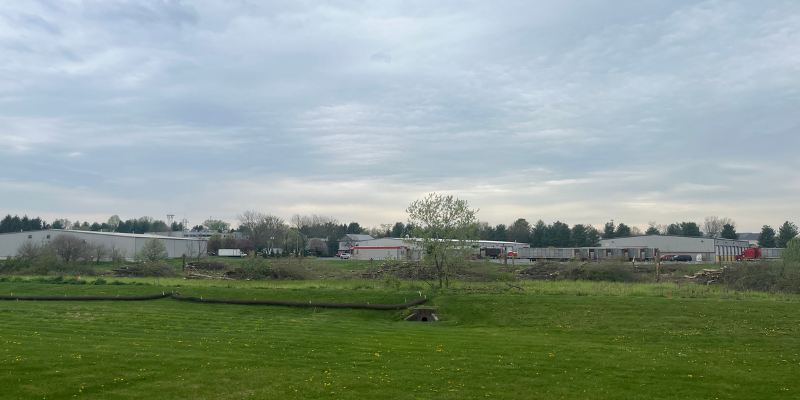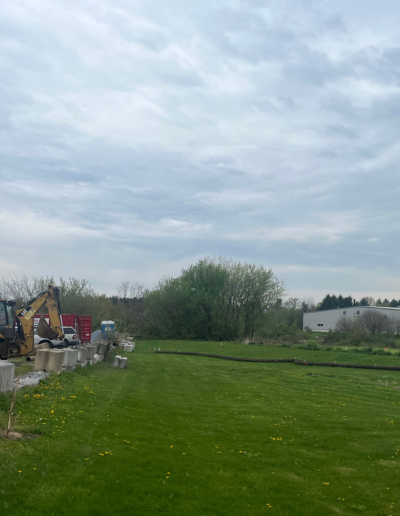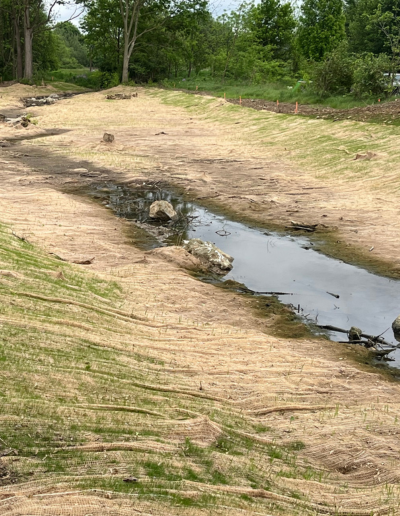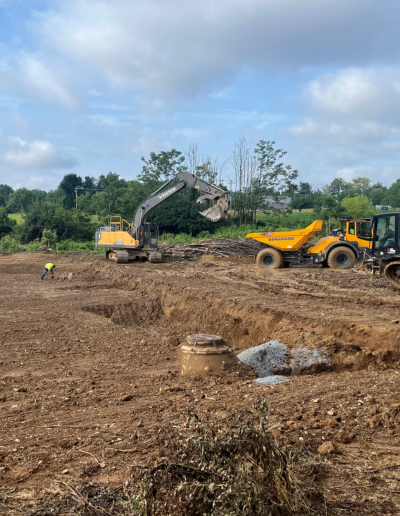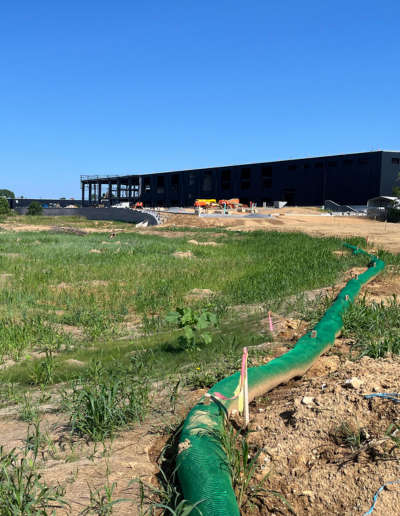Project Goals
The Santo Domingo Creek, a tributary to Lititz Run, flows through the property. Generations of land clearing and farm activity had realigned its channel, eroded its banks, and left significant legacy sediment on the floodplain, changing how the creek handled flood events and polluting the water downstream with high-nutrient sediment.
To restore the waterway to a more natural state, reduce erosion, and control the flow of pollutants — while maximizing the area Rock Lititz could build on — Flyway Excavating was called in to help.
Flyway’s Involvement
Flyway removed nearly 40,000 cubic yards of soil, as well as many non-native trees and plants, from the 17-acre floodplain of the Santo Domingo Creek. The legacy sediment was removed from the streambed to restore more than 3,000 linear feet of the creek, increasing its floodwater storage potential and providing stormwater management for the Rock Lititz expansion. We also planted native grasses, wetland plants, and trees over the entire floodplain to bring back insects, birds, and other animals, as well as increase the infiltration capacity of the floodplain.
All this restoration work led to the second part of Flyway’s involvement in the project. A state highway, PA 501, crosses the Santo Domingo Creek and runs parallel to Rock Lititz. With the fill generated by the stream and floodplain restoration, we created a road base for the new street connecting 501 to the Rock Lititz campus.
The Result
The Santo Domingo Creek project increased the waterway’s flood storage and peak reduction, which meant traditional stormwater retention basins were not required on the site. This enabled a more complete use of the land, dividing it into 10 full-sized parcels instead of eight, and allowed the township to garner MS4 credits for improved stormwater management.
The project also provided water quality benefits. Removing legacy sediment from the streambed immediately lightened the nutrient load heading downstream.
And while the newly planted vegetation is an aesthetic improvement for the Rock Lititz campus, it also increases habitat for native wildlife to return. With an eye on the future, plans for walking trails are being developed to make the site a recreational area and an educational tool for both campus employees and the public.
